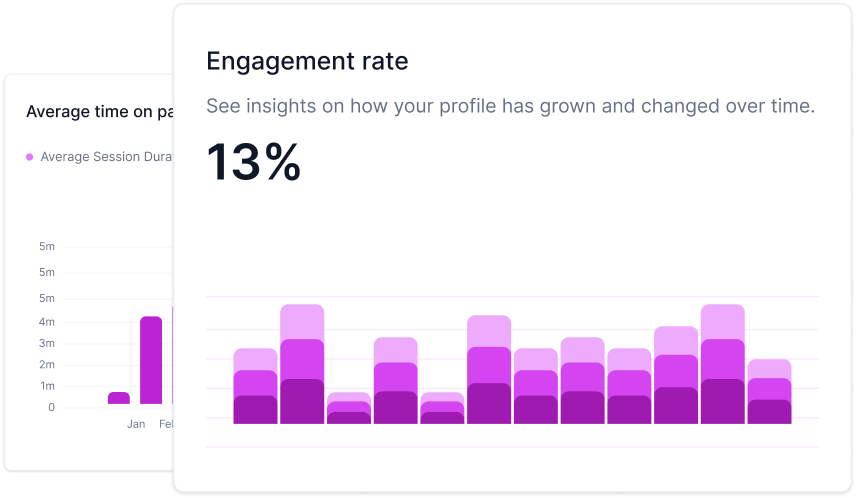What is Cost-Per-Impression (CPM)?
Cost-Per-Impression (CPM) is an online advertising model where advertisers pay for every 1,000 times their ad is displayed to users, regardless of whether it results in a click. It's a common pricing model used to raise brand awareness and increase visibility in the digital landscape.
What is Cost-Per-Impression (CPM), and How Does It Differ from Other Advertising Models like CPC and CPA?
Cost-Per-Impression (CPM) is an advertising model where advertisers pay for every 1,000 times their ad is displayed to users, irrespective of whether those ads result in clicks or other interactions. It's often used to raise brand awareness and increase visibility.
To understand how CPM differs from other models, let's briefly touch on two key alternatives:
- Cost-Per-Click (CPC): In the CPC model, advertisers pay only when a user clicks on their ad. It's performance-oriented, ideal for driving traffic or conversions, but it doesn't guarantee exposure like CPM.
- Cost-Per-Acquisition (CPA): CPA focuses on actual conversions, where advertisers only pay when a specific action is completed, such as a purchase. It's highly results-driven, unlike CPM, which emphasizes impressions.
In essence, CPM is about making an impression—getting your brand or message in front of your target audience. Unlike CPC and CPA, it prioritizes visibility over clicks or specific actions.
How Can I Calculate and Compare the Cost-Effectiveness of CPM Campaigns, and What Benchmarks Should I Aim For?
Measuring the effectiveness of CPM campaigns is essential to determine the return on your investment. Here's how to calculate and evaluate the cost-effectiveness of CPM campaigns:
Calculate CPM: To determine your CPM, divide the total cost of your advertising campaign by the number of impressions, then multiply by 1,000. It's expressed as cost per 1,000 impressions.
Benchmarks: CPM benchmarks can vary by industry, but a typical range is between $1 to $3. However, it's crucial to set benchmarks based on your specific goals, competition, and target audience. Lower CPMs indicate cost-effectiveness, but it's important to balance cost with the quality of impressions.
To evaluate the effectiveness, consider factors like click-through rate (CTR), brand visibility, and engagement. The goal is to ensure that your CPM investment aligns with your advertising objectives and provides value.
What Strategies Can I Use to Optimize CPM Campaigns and Maximize Their Impact on Brand Visibility and Engagement?
Optimizing CPM campaigns involves several strategies to make the most of your impressions:
- Audience Targeting: Use precise audience targeting to ensure your ads reach the right people. Demographics, interests, and behaviors should guide your choices.
- Compelling Ad Creative: Create eye-catching and engaging ad creatives. A well-designed and relevant ad is more likely to leave a lasting impression.
- Frequency Capping: Avoid bombarding users with your ads. Implement frequency capping to control how often an individual sees your ad, preventing ad fatigue.
- A/B Testing: Continuously test different ad variations to understand what works best. Experiment with ad copy, imagery, and call-to-action buttons.
- Ad Placement: Choose the right platforms and placements for your ads. Analyze where your audience spends the most time and focus your efforts there.
- Ad Scheduling: Consider when your target audience is most active online. Schedule your ads to coincide with these peak times.
- Tracking and Analytics: Regularly monitor campaign performance and adjust your strategies based on data insights. Use tools like Google Analytics to assess your CPM campaign's impact on website traffic and user behavior.
In conclusion, Cost-Per-Impression (CPM) advertising is a powerful tool for building brand awareness and increasing visibility. Understanding how it differs from other pricing models and knowing how to calculate its cost-effectiveness are crucial. By employing effective strategies, you can optimize CPM campaigns to leave a lasting impression and boost brand engagement in the digital world.

